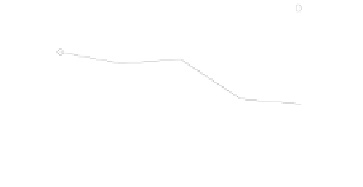Biomedical Engineering Reference
In-Depth Information
Shoulder/Elbow
35
25
15
Wrist/Hand
Pre1
Pre2
Pre3
Post
3month
(a)
3
2
1
1
0.5
0
Pre1
Pre2
Pr e3
Post
3month
(b)
Figure 5.4
Clinical assessments for the interactive (solid lines with circle marks) and the
passive groups (dashed lines with delta markers) before and after the robot-assisted wrist
training. (a) The FMA shoulder/elbow and wrist/hand scores; and (b) the MAS elbow
and wrist scores. The intra-group differences with statistical significance
(
<
)
P
0.05
were
(
<
)
marked with “*”, and the inter-group differences with statistical significance
P
0.05
were marked with “#”.
(
Fig. 5.4(b)
)
, whereas this reduction was temporary and could not be maintained
after 3 months. Muscle spasticity related to the elbow and wrist joints were both
released after the training for the interactive group, and this improvement could
be persisted at least for 3 months, as suggested by the MAS scores in
Fig. 5.4(b)
.
and the RMSE for the interactive group were used to describe the motor recovery
processes during the training. Decreases in the EMG activation level of the FCR
and BIC muscles for the interactive groups and in the FCR of the passive group




























































































































































































































































































































































































